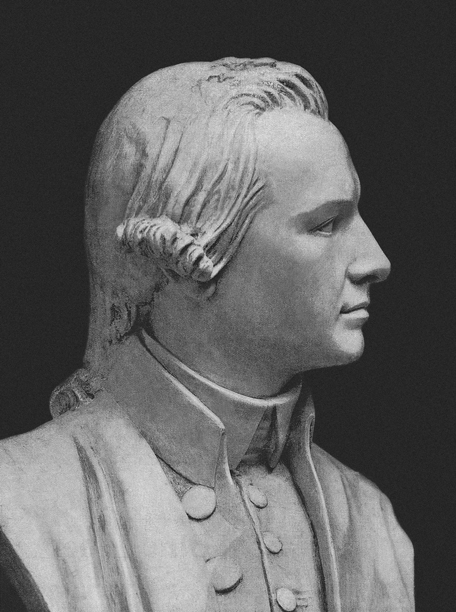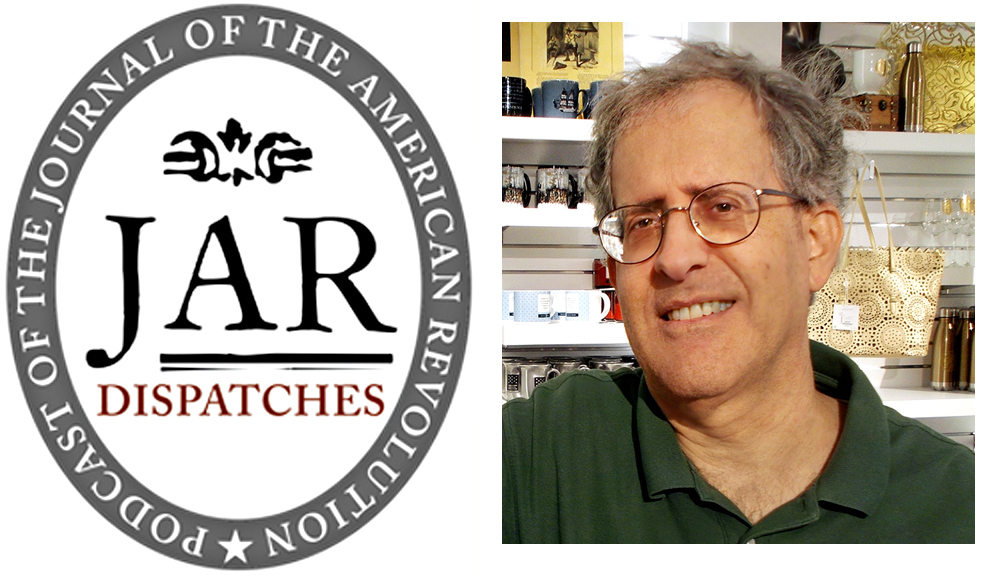At what point during the American Revolution is it most acceptable to classify colonists as either Patriots or Loyalists?
1776. Before this, many people who were indisputably Patriots (John Dickinson, James Wilson) were also loyal; in fact, most still professed loyalty. They were being forced to make choices in 1773, 1774, 1775—but after July 4, 1776 the choice was more final.
–Robert J. Allison
I would think that it was the Declaration of Independence that determined whether one was a patriot or loyalist. But of course if one kept quiet one could presumably go through the Revolution without revealing one’s loyalty.
–Gordon S. Wood
Certainly not before 1774. At that point, so-called “patriots” believed they were good, loyal citizens preserving the rights of Englishmen, while the people later called Loyalists considered themselves perfectly patriotic. The first group called the second group Tories, but the second group considered themselves “government men.” We often do injustice to the language of the times, as when we call people who claimed the rights of Englishmen in the 1760s “rebels.” Most labels are either designated by enemies (the word “tories” fits this category) or proclaimed triumphantly by the people themselves (“patriots”). The whole terminology thing is weird, a linguistic convenience so we can have subjects for our sentences. I use “Patriot” and “Loyalist” myself because I need some such noun, but I choke on my words as I do so.
–Ray Raphael
I try not to use those terms until discussing the fall of 1774 or later, when the political conflict became militarized and the sides solidified. When discussing events before then, I write about “Whigs” and “friends of the royal government.” The decision-points were different in the earlier years, so the results could be different. Some people I study, such as Boston paint merchant John Gore, joined in the movement resisting Parliament’s new taxes in the late 1760s but couldn’t break with the king in 1774. (Gore became a Loyalist and left Massachusetts in 1776—only to return ten years later.)
–J. L. Bell
The adoption of the Declaration of Independence in July 1776 is a good dividing point. It’s often forgotten that most Americans, those who rebelled and those who remained loyal to Britain, shared similar views regarding British policy. Many future Loyalists opposed the Stamp Act, Townshend Acts, and other British efforts to tighten imperial control over the colonies. Joseph Galloway, a prominent Loyalist, was also an influential member of the First Continental Congress. The breach between Patriots and Loyalists really became evident after the outbreak of fighting in Massachusetts in April 1775; many opponents of British policy drew the line at armed resistance to King and country. Attitudes hardened and divisions widened over subsequent months, with independence being too much for many colonists. So in my view, the break began in April 1775 and the separation into two camps was completed with Congress’s decision to declare independence.
–Jim Piecuch
Colonists acted along the continuum – 1. Ardent revolutionaries, 2. Dutiful Whigs (people who paid taxes to the new government and served in the militia but did only what was required), 3. Neutrals, 4. Disaffected (those disliked the Revolution but never took actions that would endanger their life or estate), and 5. Ardent Loyalists. There were also a great many “trimmers” who slipped up and down the continuum based on the events of a given moment.
There was no precise moment when all Americans had to become a Patriot (Whig) or a Loyalist (disaffected). Historians like Jack Green have convincingly argued that the people of the thirteen colonies were overwhelming “localist” in their orientation. In localities, the crucial patriot vs. loyalist moment occurred when the larger war came into the community and forced the locals to take sides. But even then, many of these allegiances were temporary. In areas never visited by the large armies, most people backed into supporting the new government because it was a path of least resistance.
Paul Smith quantified that about 20% of the American colonists were outright Loyalists. Most of the rest became “patriots”, but in many cases this was more by default than ardent commitment to the new government. Certainly, most American colonists were opposed to particular British policies (even many eventual Loyalists protested British taxes prior to the war). But there is a large gap between protest and armed rebellion. Being a dutiful citizen–tending crops, paying taxes when required, and serving in the local militia for the protection of the locality–was the path of default for the plurality of Americans.
–Michael Adelberg
We could get semantic with this question and point out that “patriot,” at the time of the Revolution, originally referred to a supporter of government; it was not until well after the new nation was established that Americans colloquially used the word to refer to those who supported the rebellion – a sort of retroactive use of the word!
Although out of my area of expertise, I believe that the classification was begun on a local basis soon after hostilities broke out, when local organizations began demanding oaths of allegiance to one side or the other. While some individuals were committed to one side or the other before fighting began, open warfare brought forced polarization on individuals and communities that may have preferred to remain flexible or neutral.
–Don N. Hagist
In the Southern backcountry, the die was cast in the spring of 1775, and tories were rounded up and deported that summer (and called as such).
–Scott Syfert
Eighteenth-century Americans understood a “Patriot” to be a person who promoted the interests of their country. The correspondence of colonial Americans reveals that they used “country” to denote two different ideas: their geographic region or home colony and the idea of the British Empire. Therefore, historians can classify a colonist as a “Patriot” at the start of the American Revolution in 1764/5 because the idea of revolutionaries standing as “Patriots” would have fit into the worldviews of reform- and radical-minded colonists; more conservative-minded colonists viewed them as “rebels.”
Historians can classify a colonist as a “Loyalist” after August 23, 1775, when King George III issued “A Proclamation for Suppressing Rebellion and Sedition.” In this declaration, King George III acknowledged that there were “Persons now in open Arms and Rebellion against Our Government” and commanded “Our obedient and loyal Subjects, to use their utmost Endeavours to withstand and suppress such Rebellion.” Colonial Americans would have viewed those who remained “loyal” to King George III after this declaration as “Loyalists.”
–Elizabeth M. Covart
In the 12-year run-up to the American Revolution, the emotions and politics of individual colonists were too liquid to divide into antipodal glasses. Even the Redding Loyalist Association of Connecticut, in their resolutions published in February 1775, suggested early support for the previous year’s Continental Congress, which they “supposed … was constituted for the purpose of restoring harmony between Great Britain and her colonies and removing the displeasure of his Majesty toward his American subjects…” Clear sorting could only occur in an individual’s reaction to the events of April 19, 1775 — the Battle of Lexington and Concord. Was armed resistance to the Crown a justified response? Answering that question distilled every colonist’s inner beliefs; his or her subsequent words and actions poured them into a cup for anyone to taste.










6 Comments
Your question relates well to a similar issue when looking at intelligence activities during the Revolutionary War period: who was a “spy” and who was simply being loyal to their government or political cause. Here activities prior to the Declaration of Independence are easier to define and a person’s identified motivation usually becomes a key factor in the label.
For example, Benjamin Thompson, aka Count Rumford, was a loyalist reporting secretly while Dr. Benjamin Church was a British spy reporting for personal gain.
I didn’t come up with an answer the first time I considered this question but, having reviewed the responses above along with some recent research into the good Rev Samuel Seabury and his Letters from A W Farmer, I would add a few thoughts. Fall of 1774 saw the debate heat up when the First Continental Congress voted for nonimporation, nonexportation agreements. People were now forced to make a choice. Not necessarily for independence but certainly for rebellion. In New York, various votes and petitions circulated in Spring 1775 taking the form of refusing (or not) to send delegates to the second Continental Congress. At the same time, competing petitions ran rampant in GA and SC pledging various levels of loyalty to the Crown and/or acceptance of the nonimportation agreements. Again, at the same time, the Committees of Safety (or equivalent in other colonies) sprang up and took control of government. I think early 1775 was a crucial time period for defining which side a person would take, however, it wasn’t until Fall of 1775 that Drayton worked his bully tactics in the SC backcountry at Ninety-Six (followed later by the Snow Campaign) that established Whig control over the militia.
While I believe most people were pushed into a choice by 1776, there was still plenty of time to become a Patriot. In fact, I’m not sure there ever stopped being a time when a person could make the switch and be welcomed. Well, short of Yorktown anyway.
Excellent points all around! All things considered, I’d have to define it as the period of time between Lexington/Concord and the signing of the Declaration of Independence. The beginning of armed combat made it clear where things were heading, and the signing of the Declaration was the point of no return – for us as a nation, of course; individuals certainly could and did change their minds.
I have completely enjoyed this “five subjects in five days” series of Q&As. Great questions and very thoughtful independent answers! 100% thought provoking. Thank you!
Thanks, John. Glad you enjoyed the group interview series. It was great to see so many perspectives at once and we hope to do it again in the future, so feel free to suggest some new questions.
Paul Smith arrives as his oft-cited figure of 20% loyalist by dubious speculations. For an explanation and critique of his method see footnote 2 to chapter 4 in my People’s History of the American Revolution. The number seems plausible but the way he gets there is dubious. Since we all like numbers, and since John Adams’s “one-third/one third/one-third” is implausible and shot full of holes (he never really applied that to patriots and loyalists in the way he’s quoted), people have accepted Smith as the authority, but they shouldn’t. Check out Smith’s WMQ article and my critique, or if there’s enough interest, I’ll put it all in a JAR post.